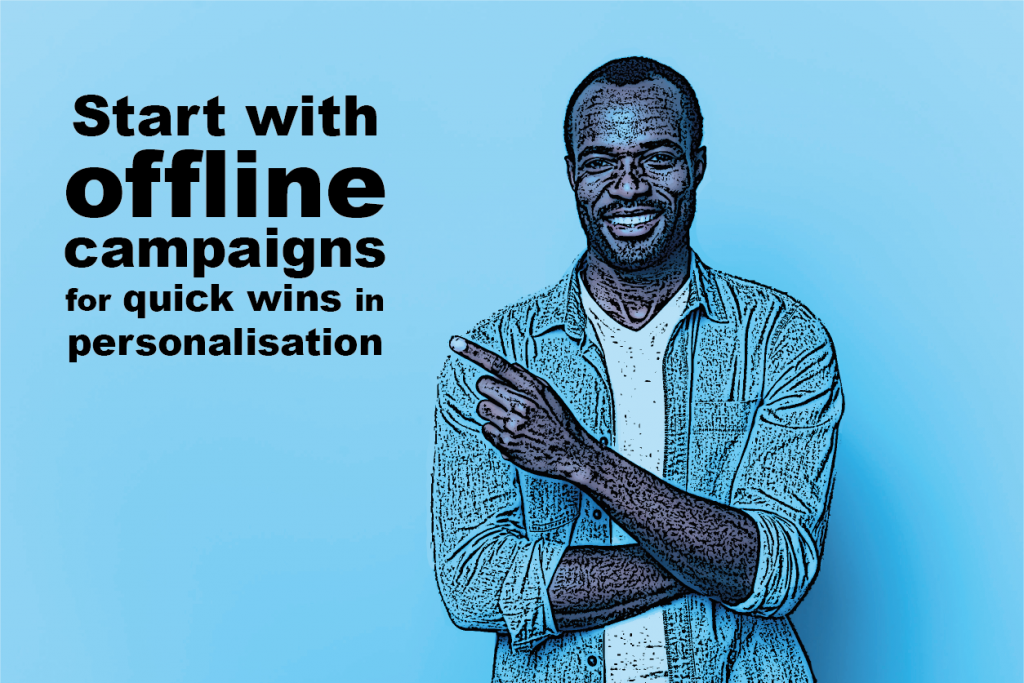Customer loyalty is no longer about labels, products or prices. It’s about who is there for customers whenever and wherever they need it. No wonder that 70% of companies started splurging on real-time customer analytics solutions in recent years and more than half of them have seen a huge bump in customer retention as a result. Hyper-relevance is what companies should be aiming for, Accenture says: much like today’s customers, being always on, always changing and always available.
But that’s easier said than done, especially when it comes to the financial services industry.
“In terms of resources, the biggest challenge for banks is to integrate real-time data into a personalisation platform. As a general rule, the more systems are linked to the platform, the better it performs in real time. But that’s a huge undertaking on the bank’s part,” Áron Vitályos, W.UP’s senior banking consultant points out. Not all is lost, though. “They could start off with a so-called offline phase. This way, they get a better idea of personalisation and its potential before completely committing to a full-scale transformation.”
So what does offline personalisation look like?
Áron explains: “First, the bank shares its offline data with our data scientist team, including transactional and basic customer and demographic information. No system integration is needed at this stage. Then we start analysing and enriching the data we’ve received.” Enrichment essentially means filling in the blanks in datasets. For instance, in addition to just differentiating between income and expenses in a customer’s account, banks will also be able to see if the transactions are regular or a one-off. This is also a part of transaction categorisation. Then comes profile building. Customer profiles offer snapshots of customers’ lives, habits and preferences in terms of travel, transport, entertainment, shopping, dining and so on. “Currently we work with 7-8 different profiles, each of which is defined by 15-20 variables, so banks can target campaigns as precisely as possible,” Áron says.
“But how is this better than old school segmenting,” you might wonder. Glad you’ve asked.
Traditional banks, or most of them anyway, have long labelled customers as mass retail, premium or private banking clients based on how much money they have or receive in their account on a monthly basis. But that’s not the whole picture by a long chalk. Behaviour-based segmentation often shows wildly different results when run on the same cluster of clients – not to mention all the missed opportunities. “We’ve found that consumers categorised as premium clients based on their income or balance often behave more like mass retail customers in terms of transactions, and vice versa. This knowledge benefits banks in two ways. On the one hand, they can offer a more personalised experience for their clients. On the other hand, they can assign customer representatives to clients in a way that creates the most value both for the bank and its customers.”

The efficiency of offline campaigns is crucial – and easy – to measure. Let’s say a bank wants to launch a messaging campaign to boost credit card use among their customers. They can create a campaign using traditional segmentation methods and another one based on behavioural insights. Áron explains: “Our approach in a case like this would be to identify customers who are avid card users but tend to shop with their debit cards instead of their credit cards. Focusing on this group of customers rather than blindly messaging every single one of them, including those who haven’t even taken out a credit card yet, is bound to bring better results.”
He adds: “Banks are sitting on a giant pool of valuable customer data. But it’s stored and siloed in a way that’s been outdated for decades. They simply don’t have the data analytics tools needed for sophisticated customer segmentation.”
Of course, segmentation through offline data analysis is only a quick win compared to the game-changing potential of real-time customer engagement. Áron says: “Offline segmentation helps you turn customer data into insights, fast. If you have access to transactional data online, you can also send customers reminders and alerts, for example, before a bill is due. Moving on to the next level, banks can forecast financial events in customers’ lives, such as budget shortfalls. At the highest level of personalisation, they can even target customers with merchant offers, like discounts or rewards, based on their location.”


